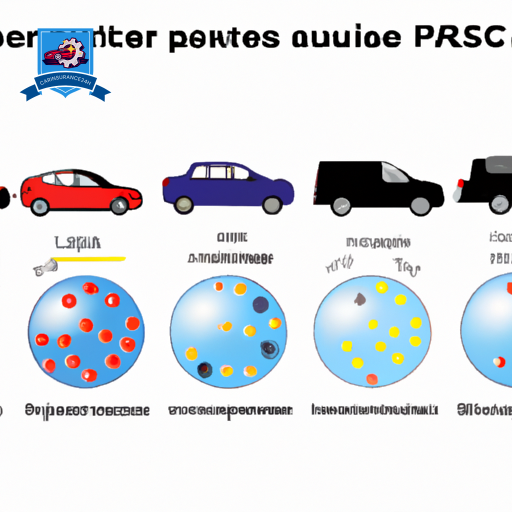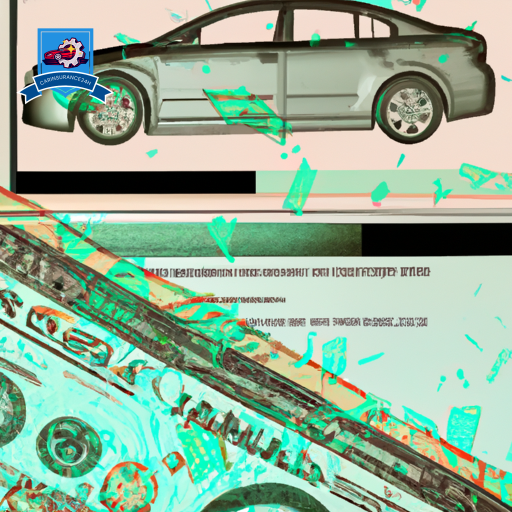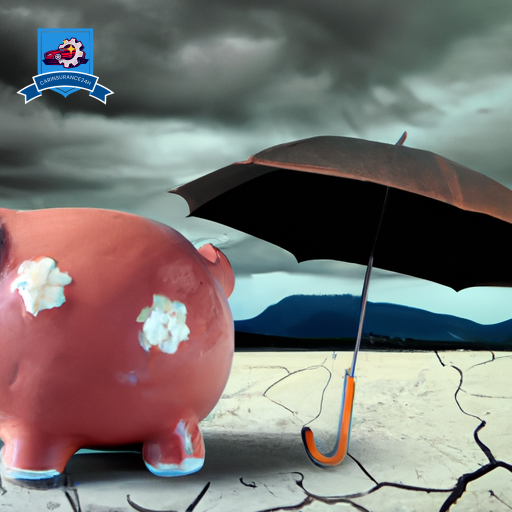Determining the appropriate level of car insurance coverage necessitates a nuanced understanding of several factors, including state-mandated minimums, the value of your vehicle, and your personal financial risk tolerance. This discussion will guide you through evaluating these critical elements, from evaluating the necessity of full and collision coverage to contemplating the implications of various deductibles and coverage limits.
By carefully weighing these aspects, you can tailor your car insurance policy to adequately protect yourself and your assets. Let’s explore how to strike the perfect balance between being overinsured and underprotected, ensuring your peace of mind on the road.
Understanding State Minimums

Determining the right amount of car insurance coverage begins with understanding the state-mandated minimums. Each state has its own set of legal requirements that dictate the minimum levels of coverage a driver must carry. These legal stipulations aim to guarantee that all drivers have a basic level of financial protection in the event of an accident. However, it’s important for drivers to know that these state minimums are just the starting point when contemplating the appropriate amount of car insurance coverage.
State-mandated minimums typically include liability insurance, which covers damages to others in accidents that are your fault. Some states may also require additional types of coverage, such as personal injury protection (PIP) and uninsured/underinsured motorist coverage. While these legal requirements ensure a baseline of protection, they may not fully cover all expenses after an accident. For example, if the costs of an accident exceed the limits of your liability coverage, you could be personally responsible for the difference.
Additionally, there are coverage exceptions to take into account. Certain states allow for alternatives to traditional insurance policies, such as posting a surety bond or making a cash deposit with the state. These alternatives, while legal, vary significantly regarding protection and financial responsibility.
Evaluating Your Vehicle’s Value

Understanding the current market value of your vehicle plays an essential role in deciding the amount of insurance coverage you need. The valuation is influenced by various factors, including depreciation rates and market trends, which can have a major impact on the insurance decisions you make. Depreciation, the decrease in value over time due to wear and tear, varies depending on the make, model, and year of your vehicle. Recognizing these depreciation rates helps in determining whether the cost of full or collision coverage is justifiable compared to the current market value of your car.
Market trends also play a pivotal role in evaluating your vehicle’s value. Factors such as the demand for certain types of vehicles, fuel prices, and advancements in automotive technology can all influence market trends, thereby affecting the resale value of your vehicle. A surge in demand for electric vehicles, for example, might increase the market value of such cars, influencing the amount of insurance coverage necessary for adequate protection.
It is important to regularly evaluate your vehicle’s value, taking into account depreciation rates and current market trends. This evaluation not only guarantees that you are not overpaying for insurance but also ensures that you have sufficient coverage in the event of an accident or theft. By understanding the true market value of your vehicle, you can make informed decisions about the level of insurance coverage that best suits your needs, balancing cost against the potential financial impact of underinsurance.
Assessing Personal Financial Risk

Understanding one’s personal financial risk is a vital step in determining the appropriate level of car insurance coverage.
This process involves evaluating financial stability and gauging risk tolerance levels.
These factors help individuals make informed decisions on the amount of protection they require from their insurance policy.
Evaluating Financial Stability
Evaluating your financial stability is a critical step in determining the level of personal financial risk you can comfortably assume when selecting car insurance coverage. A robust emergency fund serves as a financial cushion, potentially allowing for higher deductibles, which can lower premium costs. However, the adequacy of this fund must be assessed in the context of overall financial health, including obligations and future income stability.
Investment strategies also play a pivotal role in this assessment. Diversified investments can provide additional layers of financial security, impacting the ability to absorb potential losses. By carefully considering these aspects, individuals can make informed decisions about their car insurance needs, balancing risk and protection in alignment with their financial situation.
Risk Tolerance Levels
After evaluating one’s financial stability, establishing one’s risk tolerance level becomes a significant next step in selecting the appropriate car insurance coverage. Understanding one’s risk tolerance involves evaluating how much financial risk one is willing to accept. This evaluation directly influences the type and amount of insurance coverage one deems necessary.
For instance, individuals who are risk-averse may opt for more detailed policies to protect against a broader range of potential losses. Conversely, those with higher risk tolerance might select minimal coverage, betting on their ability to cover significant expenses out-of-pocket if necessary.
Factors such as lifestyle changes and the state of one’s investment portfolio also play important roles in determining risk tolerance levels. These elements together guide individuals in making informed decisions about their car insurance needs.
Considering Comprehensive Coverage

As we shift to the topic of Considering Extensive Coverage, it is essential to understand its advantages, including protection against a wide array of non-collision incidents.
Evaluating the balance between costs and the level of protection offered is critical for making an informed decision.
Benefits of Comprehensive Coverage
Full coverage offers protection against a wide array of non-collision events, including theft, vandalism, and natural disasters. This all-encompassing insurance guarantees that in the event of unexpected incidents, such as floods, fires, or theft, policyholders are not left financially burdened.
Specifically, the inclusion of natural disasters in the coverage protects against unpredictable weather-related damages, safeguarding one’s investment in their vehicle. Additionally, all-inclusive coverage plays a critical role in theft prevention, not only by covering the loss if a vehicle is stolen but also by potentially deterring theft through the provision of security measures and tracking systems.
This level of coverage, hence, offers peace of mind, knowing that one’s vehicle is protected against a broad spectrum of risks beyond mere traffic accidents.
Comparing Costs Vs. Protection
When considering inclusive coverage, weighing the costs against the protection it offers is a critical step in making an informed decision. Understanding the balance between what you pay and what you get in return involves an analysis of policy discounts and keeping abreast of coverage trends.
| Factor | Cost Impact | Emotional Impact |
|---|---|---|
| Policy Discounts | Reduces Premiums | Increases Satisfaction |
| Coverage Trends | May Raise Costs | Enhances Security Feeling |
| Risk Assessment | Varies | Can Cause Anxiety |
| Protection Level | Higher with More Coverage | Peace of Mind |
These elements collectively influence one’s decision-making process. A well-chosen policy not only aligns with current coverage trends but also maximizes the value derived from available policy discounts, ultimately instilling a sense of security and financial prudence.
When to Choose Comprehensive
Understanding the balance between cost and protection helps highlight the importance of evaluating whether all-encompassing coverage meets an individual’s insurance needs.
All-inclusive car insurance becomes vital in areas prone to natural disasters, as it covers damages beyond collisions, including events like floods, fires, and storms.
Additionally, evaluating local theft rates can guide this decision. High theft rates increase the risk of vehicle theft, making all-inclusive coverage more appealing.
This type of insurance also covers vandalism, hitting an animal, and other non-collision incidents.
Ultimately, the choice to opt for all-inclusive coverage should align with an individual’s risk assessment of these potential threats versus the additional cost of the premium.
Deciding on Collision Coverage

Determining whether you need collision coverage for your vehicle requires careful consideration of your car’s value and your financial situation. Collision coverage plays a pivotal role in your auto insurance policy by providing financial protection against damages to your vehicle resulting from an accident, regardless of fault determination. This aspect of collision coverage is particularly critical in accidents where fault is either shared or difficult to establish. Additionally, the policy can cover repairs using aftermarket parts, which can be an important solution but may affect the vehicle’s resale value and performance.
Understanding the nuances of collision coverage involves evaluating the potential out-of-pocket expenses you would face in the absence of such coverage. For vehicles with high market value or those under financing or lease agreements, maintaining collision coverage is often a requirement. However, for older vehicles, the cost of collision coverage might outweigh the benefits, especially if the vehicle’s value does not justify the premium expenses.
When considering collision coverage, it’s essential to assess the likelihood of being involved in an accident and the financial implications of such an event. If the cost of repairs or replacement could greatly impact your finances, opting for collision coverage might be a prudent choice. On the other hand, if your vehicle has depreciated in value and you possess the financial resilience to cover potential damages, you might decide to forego collision coverage.
Factoring in Deductibles and Limits

A critical aspect of choosing the right car insurance policy involves carefully considering the deductibles and limits that best suit your needs and financial situation. Deductibles are the amounts you pay out of pocket before your insurance coverage kicks in, while limits are the maximum amounts your insurer will pay for a covered loss. Balancing these two factors is essential for tailoring a policy that provides adequate protection without overextending your budget.
When factoring in deductibles and limits, consider the following:
-
Coverage Types: Different types of coverage come with varying deductible options. For example, collision and comprehensive coverages typically require a deductible. Assessing the types of coverage you need, such as liability, collision, or comprehensive, is a foundational step in understanding how deductibles apply to your policy.
-
Policy Discounts: Higher deductibles often lead to lower premium costs. Some insurers offer policy discounts for choosing a higher deductible. It’s important to weigh the potential savings against the risk of having to pay more out-of-pocket in the event of an accident.
-
Financial Situation: Your current financial health plays a crucial role in deciding an appropriate deductible. Opting for a higher deductible makes sense if you have sufficient savings to cover it in case of a claim. Conversely, a lower deductible might be preferable if it aligns better with your budgetary constraints.
-
Risk Assessment: Consider your driving habits and risk exposure. Drivers with a lower risk of accidents might opt for a higher deductible to save on premiums, whereas those with a higher risk might prefer the security of a lower deductible.
Frequently Asked Questions
How Does My Driving Record Impact the Cost and Amount of Car Insurance Coverage I Need?
A driving record, like a report card for motorists, heavily influences car insurance costs. Traffic violations may increase premiums, whereas a clean history could qualify for policy discounts, directly impacting the required coverage amount.
Can the Age and Experience of the Driver Influence the Required Insurance Coverage Levels?
Yes, the age and experience of a driver can influence required insurance coverage levels, often affecting vehicle value considerations and eligibility for insurance discounts. Younger, less experienced drivers may require higher coverage due to increased risk.
How Does the Geographical Location and Crime Rate in My Area Affect My Car Insurance Coverage Needs?
Geographical location and crime rate greatly impact insurance coverage needs due to varying weather patterns and road infrastructure quality. High crime areas may require extensive coverage, while extreme weather conditions could require increased protection against natural disasters.
Are There Specific Coverage Considerations for Electric or Hybrid Vehicles Compared to Traditional Gas-Powered Cars?
Yes, electric or hybrid vehicles carry unique considerations, such as battery warranties and the availability of charging infrastructure, which can influence the extent of coverage needed. These factors differentiate their insurance needs from traditional gas-powered cars.
How Do Changes in My Personal Life, Such as Getting Married or Having Children, Affect My Car Insurance Coverage Requirements?
Changes in personal life, such as marriage or having children, necessitate coverage adjustments. Life events influence risk profiles and insurance needs, prompting policyholders to reassess their car insurance to guarantee adequate protection and compliance.










